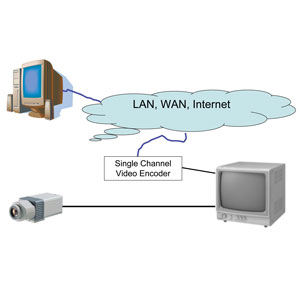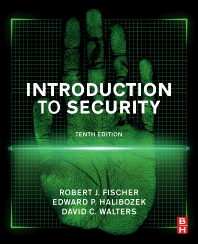My recent visit to a national alarm equipment distribution outlet was a sobering event. While wandering the aisles looking for new and interesting equipment, I ran into one of my industry associates whom I’ve known for more than 30 years. When I asked, “How’s business?” his somber reply was that he’s cut back the number of his employees and vehicles drastically to try and stay profitable. It doesn’t seem to matter where you go in the lower 48 states; times right now are tough for alarm companies and their employees.
During economic times such as we’re experiencing now, it can be very difficult to sell new systems to new clients. New construction slows down, customers tighten their grip on their wallets and budgets, often mentally putting the purchase or upgrade of an alarm system into the “wait until times are better” category.
Our industry has long relied on recurring monthly revenue to provide the cash flow and profitability that is critical for most security dealers’ survival. What’s important to remember during this difficult time is a simple adage: The best customers are those that you have already sold. It can be a simple process to increase the revenues from your clients who have previously installed security systems.

|
| Using the “parallel” output from an existing CCTV monitor, the video encoder will make everything on the screen available to the LAN and the Internet. |
Think about all of the CCTV systems you’ve installed in the past 10 years. Thousands of old-school analog CCTV systems are out there, and every one of them can be quickly and easily upgraded to provide remote viewing over the Internet through the simple addition of a video encoder.
Selling this upgrade is very straightforward. Stop in to visit your existing customer who has an older analog CCTV system and ask them if they are using a broadband Internet connection for that location, such as a DSL, cable modem, or T1 line. If the answer is affirmative, direct the client to use Internet Explorer to see the video from a CCTV system you’ve connected at your home or office. Then explain to the customer that for an economical installation cost (or a renewed contract with an increased monthly charge) his or her CCTV system can be made available for viewing from their home, other location, smart phone, or anywhere the Internet is available.
Technically, the key to making this installation very easy is that most traditional analog video monitors have a parallel, loop through or video out BNC connection along with the video input from the analog camera, multiplexer, or quad box.
Connecting a single video encoder to that output and hooking the encoder to the client’s network switch/router provides the video feed that is being seen on the local monitor to the network. Program the encoder for the proper “four magic keys” (IP address, subnet mask, default gateway, and software port), set up the port forwarding in the router, clear the ports through the DSL/cable modem firewall, and that video is now available over the Internet. Give your client the proper user name/password, set up a DDNS service such as dyndns.org to track the public IP address if it changes, and the installation is complete. It’s important that the security salesperson check to see that there’s an available RJ-45 port open on the client’s switch or switch/router to connect the new encoder. If all switch ports are in use, it’s inexpensive to add a small network switch to the client’s network to accommodate the encoder’s network connection.
One caution is that the client must understand that what they can see on the Internet will be exactly what is presented on their video monitor. If they are viewing multiple cameras on the same screen, those same cameras will be transmitted over the Internet. It’s important that you inform your client that the networked/Internet video won’t provide any improvement of the video images; if anything, viewing over the Internet will slightly degrade the viewing quality of the images.
An added benefit to this upgrade is that not only will the video be available over the Internet, but it will also be available to PCs on the local network. So the boss, from his or her office, can watch the same video on his or her PC that is being displayed behind the cashier.
Your existing customers can be easily upgraded as long as they have a broadband Internet connection, no cameras need to be changed out, and the installation is simple and quick. Single-channel video encoders are available from almost all major IP CCTV manufacturers such as Axis Communications, Bosch Security and Honeywell.
ESNT Networking Certification Training Now on CD
In order to provide this vendor-independent technician certification training program more efficiently, we have taken what was a two-day classroom training program and converted it into a study-at-home lecture series with a one-day hands-on Certification Lab.
This is the only independent certification program available that focuses specifically on the proper programming, connection and troubleshooting of IP-enabled physical security devices.
On the disk are the lecture portions of the training program in Windows Media format. Technicians will be able to learn about advanced networking by viewing these lectures and completing the short quizzes that are included for each of the nine lecture sections.
Included with this disk are the freeware programs that are used in the at-home training labs, enabling technicians to practice network troubleshooting at home.
Once a student has completed the lecture series, he or she will be able to take the 50-question practice ESNT test that is available at www.slaytonsolutionsltd.com. Students will need a user name and password issued by Slayton Solutions to access this practice exam.
At the one-day, hands-on classes students will program IP devices, troubleshoot common network problems, and complete the formal written examination for the ESNT certification, which is administered by the Electronic Technicians Association.
By providing this training/certification program as a blended training program with the study-at-home lectures, practice test, and one-day classroom session, technicians can be trained and certified at a reduced overall cost with less time required for classroom training and lower costs for instructor time and travel.
For information, please visit our website where sample webinars and test questions are available at no charge.






